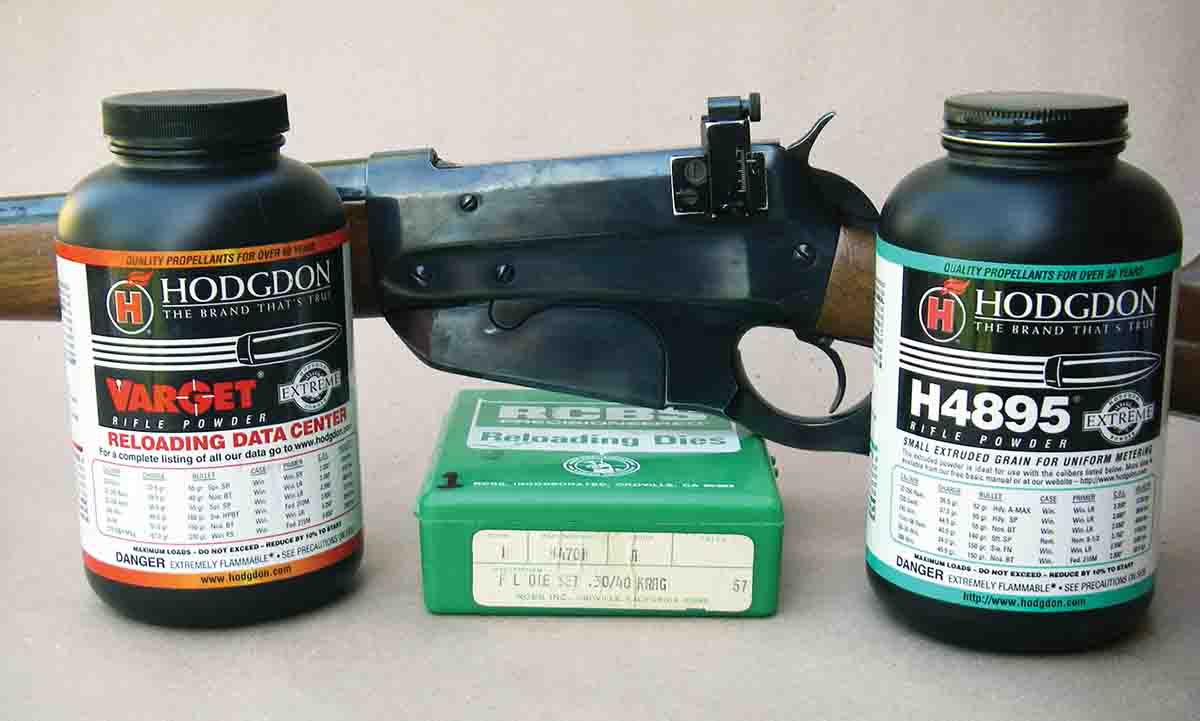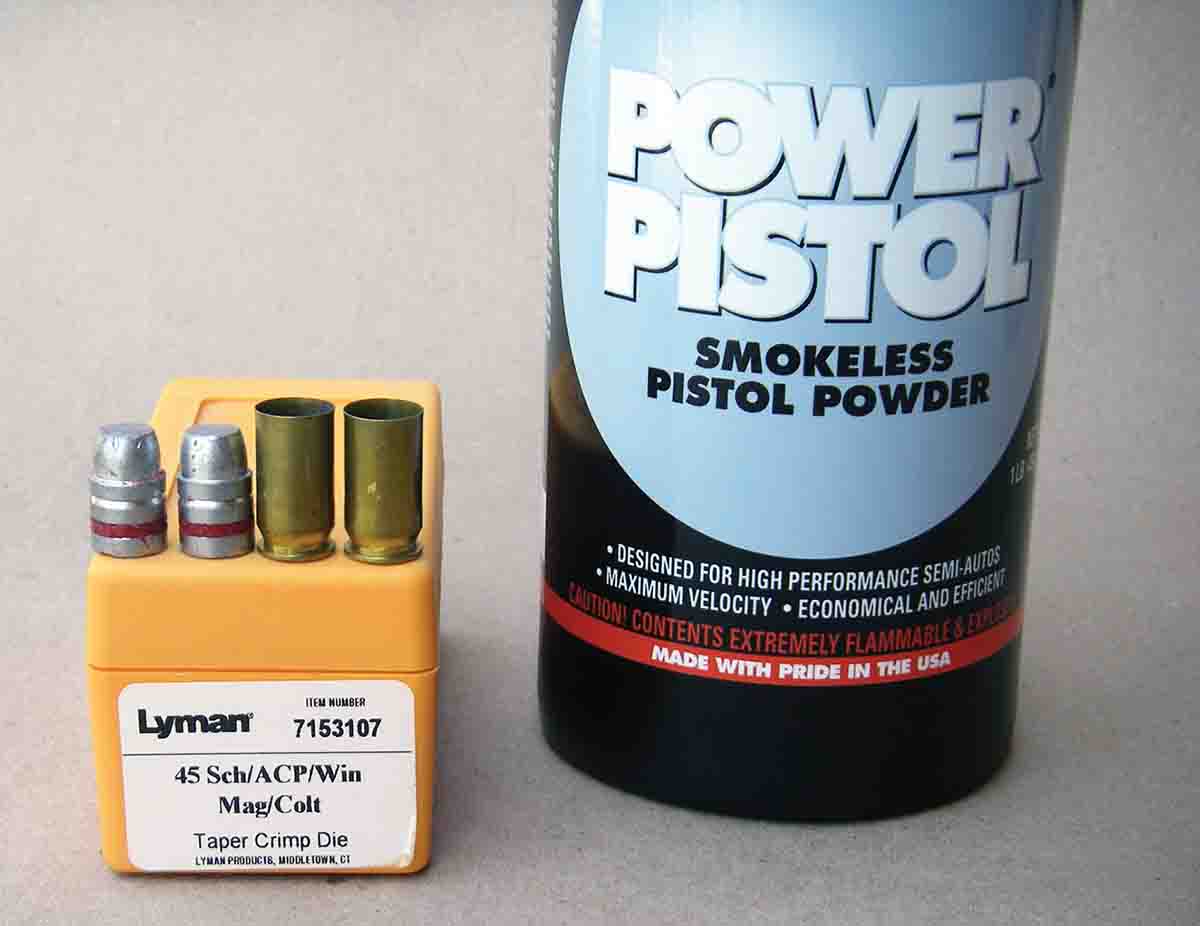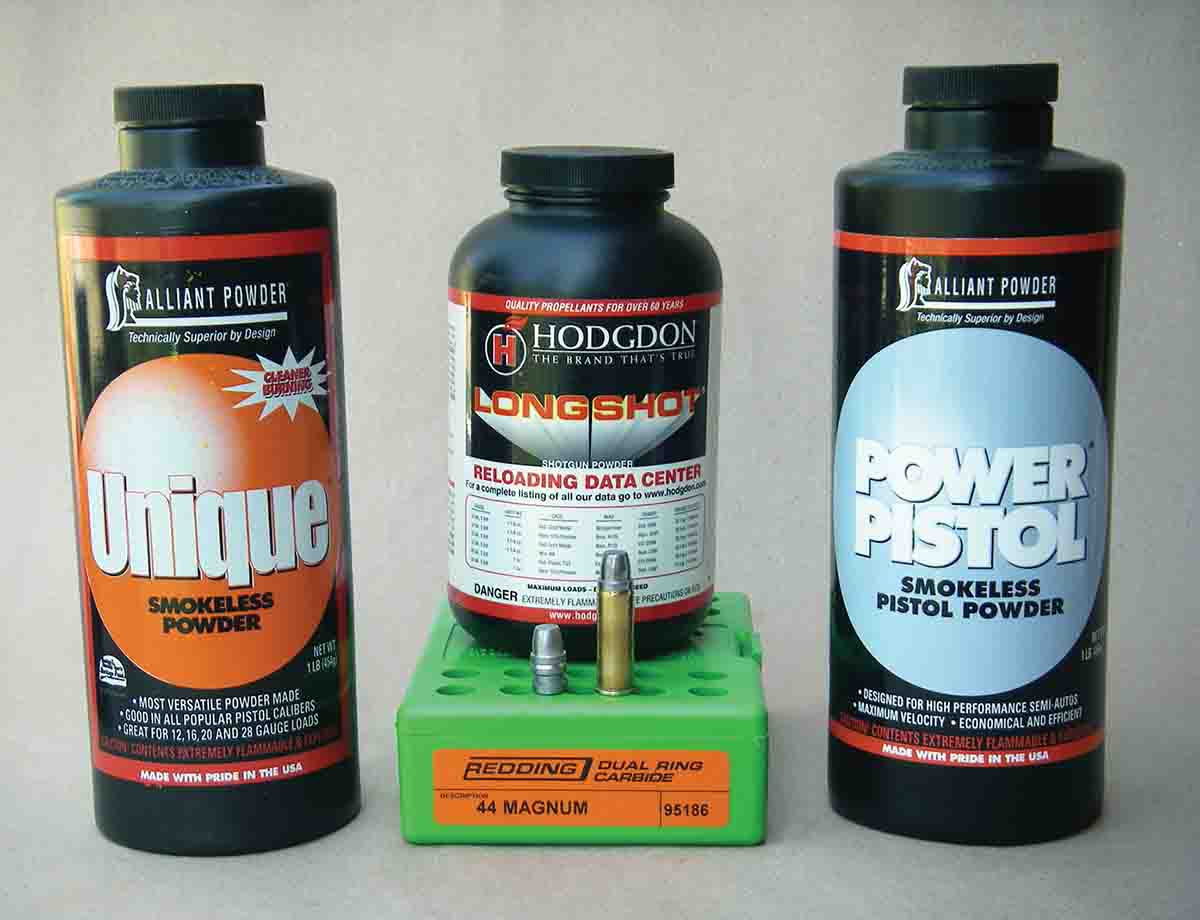Bullets & Brass
Browning Model 1895 .30-40 Krag Loads
column By: Brian Pearce | December, 18

Am I off base thinking that the .30-40 can achieve the above velocity range with 180-grain bullets in a modern Model 1895? I know that the Browning 1895 is not as strong as the Ruger No. 3 rifle, but will it safely handle the above loads? Thanks for your time, and all the best. – G.T., Murrieta GA
A: The Winchester Model 1895 was chambered for more potent, higher-pressure cartridges than the .30-40 Krag, such as the .30-06 Springfield. The modern Browning Model 1895 (built in Japan by Miroku) is certainly constructed of better steels and should prove even stronger than the originals.
Yes, you certainly can load the .30-40 Krag to higher pressures than the mild factory loads when fired in these rifles. However, pressure limits should be similar to the .30-06 and should never exceed .270 Winchester or .308 Winchester pressures.
I have also owned and hunted with a Browning Model 1895 chambered in .30-40 Krag since they were introduced in the middle 1980s. It has accounted for black bear, deer and elk, and is a fine saddle rifle. It has proven capable of MOA accuracy with select handloads and has been fun to own. I have taken a similar approach to improve performance using various 165- and 180-grain bullets. Since .30-40 case capacity is similar to the .308 Winchester, powders that perform best in that cartridge will produce the results you desire. You did not ask for load data; however, I have had notably good results using Hodgdon H-4895, Varget, Accurate 2520 and A-2495.
.45 Auto Cast Bullets

I recently purchased a RCBS 45-270-SAA mould and would like to try that bullet in the .45 ACP cylinders of my convertible revolvers that include a Freedom Arms Model 83 and a Ruger New Model Blackhawk “flattop” from Lipsey’s.
I regularly use Hodgdon Titegroup, Alliant Power Pistol and Winchester 231 in my .45 ACP pistols and revolvers [using] CCI 300, Federal 150 or Winchester Large Pistol primers. I will most likely use wheel weights as the alloy to cast bullets, which will be sized .451 to .452 inch and lubed with LBT Blue Soft lube. I also have a stock of slower burning powders including Winchester 296, Hodgdon Lil’Gun and Alliant Power Pro 300MP if you think they will work. Brass will be Winchester, Federal and PMC. I do not have much Starline, but can certainly purchase some.
Any data with these powders would be greatly appreciated. I am interested in both standard pressure loads at 21,000 psi as well as +P loads at 23,000 psi. Based on your article in Handloader No. 275 (Dec. 2011) containing .45 Colt loads with this bullet, it would be nice to be in the 750 to 1,000 fps range.
Incidentally, I am not concerned with these loads getting into my auto-loading .45 ACP guns, because I doubt that the wide front driving band and general bullet shape will not allow them to feed or chamber. But I will certainly double check to verify this and will be certain that +P loads don’t end up in my auto-loading pistols. Thank you for your time and I’m looking forward to hearing from you. – J.D., Littleton CO
A: I am unaware of any autoloading .45 ACP pistol that would feed this bullet. Even if you were to load single cartridges directly into the chamber of one of your pistols, and the chamber dimensions would allow the cartridge and bullet (with its wide front driving band designed specifically for revolvers) to chamber with the slide in full battery, and if the pressures are within industry pressure guidelines, these loads would not hurt your gun.
As for load data, Winchester 296, Hodgdon Lil’Gun and Alliant Power Pro 300-MP powders are not really suitable choices for this application. Of the remaining powders you have on hand, Alliant Power Pistol is the most appropriate and will produce the performance you desire. For a standard-pressure load, start with 6.0 grains, which will produce a bit over 800 fps in most revolvers. For a +P pressure load, bump the charge to 6.5 grains for around 900 fps. Use a standard nonmagnum primer such as the Federal 150 or CCI 300, which will serve to keep pressures down while providing the best accuracy. Overall cartridge length should not be less than 1.265 inches, or pressures will be increased.
The above loads were assembled in Starline .45 Auto Rim cases, but you will not see a significant difference when using the .45 ACP case. The Auto Rim cartridge headspaces on the rim, which allows a heavy roll crimp that is not an option when using .45 ACP cases. Rather, you will necessarily need to apply a taper crimp, which is industry specified to measure .470 inch to provide proper headspace control with this rimless case.
Vaquero Deer Loads

Here is my question. I plan to carry my Vaquero this fall while hunting black bear and mule deer (both with a rifle) in Montana and would like just a bit more power in case I find myself within handgun range for deer. I purchased some 250-grain Keith bullets from Montana Bullet Works and am ready to load ammo and begin practicing. I am somewhat recoil sensitive and only want to push this bullet to around 1,050 to 1,100 fps in an effort to keep recoil within my limits. Can you suggest a powder and charge weight to accomplish this? I can purchase whatever powder you think will give me the best results. Incidentally, my gun has the 5.5-inch barrel. Do you think that I am loading this gun too light for taking deer? Any insight that you can offer will be appreciated. – T.B., via e-mail
A: A .44-caliber 250-grain Keith bullet at 1,050 to 1,100 fps will cleanly take mule deer within any reasonable distance with correct shot placement. It will completely penetrate and exit at any reasonable angle while cutting a full-caliber hole, which produces shock to the nervous system while leaving a significant blood trail.
As for load data, there are several powders that will give top-notch performance along with the velocity you desire. A classic load includes 9.5 to 10.0 grains of Alliant Unique. Alliant Power Pistol will give a slight edge in accuracy, with 9.2 to 9.5 grains producing your targeted velocity. Another excellent choice includes 10.5 grains of Hodgdon Longshot. I hope the above information helps and that you have a successful hunt.
Proper Bullet Crimp
.jpg)
I have acquired an RCBS taper crimp die and have begun loading ammo. My crimp does not look very heavy when compared with the roll crimp that I have traditionally used with cast and jacketed bullets for many years. Is there a crimp specification that I should be attempting to duplicate? Perhaps you can offer some additional tips to help me achieve the correct amount of taper crimp.
A: Cartridge drawings for the .357 Magnum list the case mouth at .379 inch, but factory-load crimps are almost always below this figure and often measure from .367 to .373 inch, with reference ammunition including Hornady, Remington, Buffalo Bore, Winchester and others. Since the .357 headspaces on the rim, a crimp that is a few thousandths inch smaller than industry specifications is insignificant. It is usually best to match the amount of crimp to the bullet. I suggest applying a crimp as heavy as the bullet design will permit without damaging it. Keep in mind that the knurling of the crimp cannelure can be compressed slightly without damage to the bullet. Another tip is to seat bullets until the case mouth is almost even with the top of the cannelure, usually within .005 to .015 inch, then apply the roll crimp as a separate step.
Since a taper crimp generally does not produce as much bullet pull as a roll crimp, in this application I generally favor easy-to-ignite powders, which will help lower extreme velocity spreads and increase accuracy. To further test if your crimp is working correctly, take a single cartridge and subject it to recoil at least 20 or more times. Measure the overall cartridge length before and after. If the bullet is creeping or “walking” out of the case resulting in a longer overall length, you will need to increase the crimp, or bullet pull.


